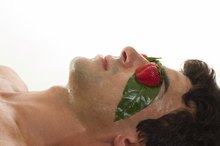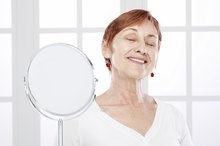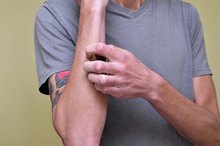Cost of Fraxel Laser Treatment
A recent development in laser skin rejuvenation, the Fraxel laser is used to treat wrinkles, acne scars and sun-damaged skin. Unlike traditional ablative laser resurfacing, which vaporizes the skin’s entire surface, the Fraxel laser is selectively applied to the skin, creating a grid-like pattern of evenly spaced microscopic wounds. Because it leaves a significant portion of the skin intact, Fraxel laser treatment lacks the risks and long recovery time associated with an ablative laser treatment, making it an appealing alternative.
Fraxel Repair
One of three Fraxel laser treatments available to patients, Fraxel Repair is an aggressive treatment suitable for severely damaged skin 1. Comprising a single treatment, the average cost of Fraxel Repair is between $3,000 and $5,000, according to the Fraxel website 1. The DermaNetwork site notes that the cost of the procedure varies depending upon geographic area and the aggressiveness of the treatment. As Fraxel Repair is a more aggressive treatment, recovery time can take up to 10 days 1.
Fraxel Restore
Microdermabrasion vs. Glycolic Peel
Learn More
The most widely used Fraxel treatment, Fraxel Restore, resurfaces moderately damaged skin, treating wrinkles, acne scars and melasma. According to the Fraxel website, the average cost of a Fraxel Restore treatment ranges from $750 to $1,500, and downtime is usually between two and four days. Most patients require at least three treatments and it can take up to six months for patients to see the full benefits of the treatments.
Fraxel Refine
A gentler treatment, Fraxel Refine treats minor skin damage over the course of several sessions. The average cost of a single full-face Fraxel Refine treatment ranges from $750 to $1,000, according to the Fraxel website. Like the Fraxel Restore, most patients require three to five treatments for optimal results. Recovery time is minimal, and patients can usually return the work the same day.
- A gentler treatment, Fraxel Refine treats minor skin damage over the course of several sessions.
- Like the Fraxel Restore, most patients require three to five treatments for optimal results.
Partial Face Treatment
How to Get Rid of Stitch Scars on the Face
Learn More
Partial face Fraxel treatments involve treatment of a specific problem area like the cheeks or beneath the eyes, rather than the full face. According to the Anew Center for Medical Aesthetics, the cost of a partial-face Fraxel Refine treatment varies with treatment, and can range from between $400 and $800. Many doctors recommend patients opt for a full-face treatment instead, in order to give the skin a more even result.
Treatment Packages
Many skin care professionals offer patients the option of purchasing a series of treatments at a reduced rate. For instance, if a single Fraxel Restore treatment costs $1,000, a practitioner may offer a package of three for $2,400, or, $800 per treatment. Discuss the possibility of purchasing a package of treatments during your initial consultation with a Fraxel skin care professional.
Warning
Prior to selecting a skin care professional to perform Fraxel laser treatments, do some research. Choose an experienced professional who provides before and after photographs of former clients, offers references, and candidly discusses questions and concerns. Be wary of clinics that offer Fraxel laser treatments for significantly less than the average cost—this could indicate an improperly trained or unlicensed clinician. If used incorrectly, a Fraxel laser can burn and scar the skin. When it comes to laser treatments, it isn’t worth compromising good results for the sake of saving a little money.
- Prior to selecting a skin care professional to perform Fraxel laser treatments, do some research.
- Be wary of clinics that offer Fraxel laser treatments for significantly less than the average cost—this could indicate an improperly trained or unlicensed clinician.
Related Articles
References
Writer Bio
Giselle Berge has written professionally since 2003 and for Demand Studios since 2009, with numerous articles published on eHow. She specializes in travel, living and investing abroad and natural health and beauty. She received a Certifcat de Langue Française from Paris-Sorbonne IV in 2005, and also studied in Italy at the Universita' per Stranieri di Perugia.









